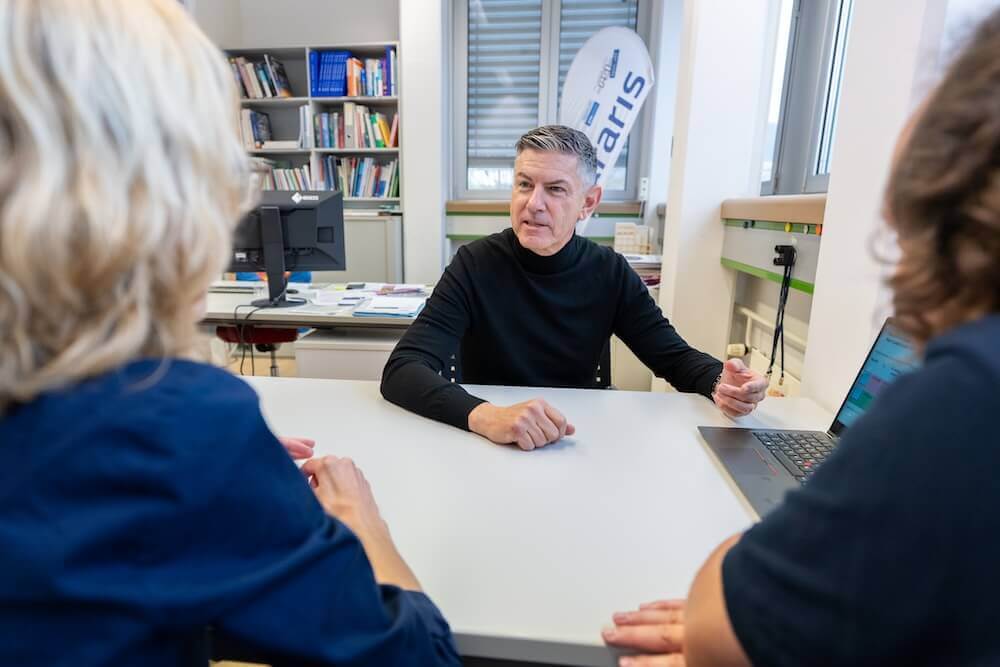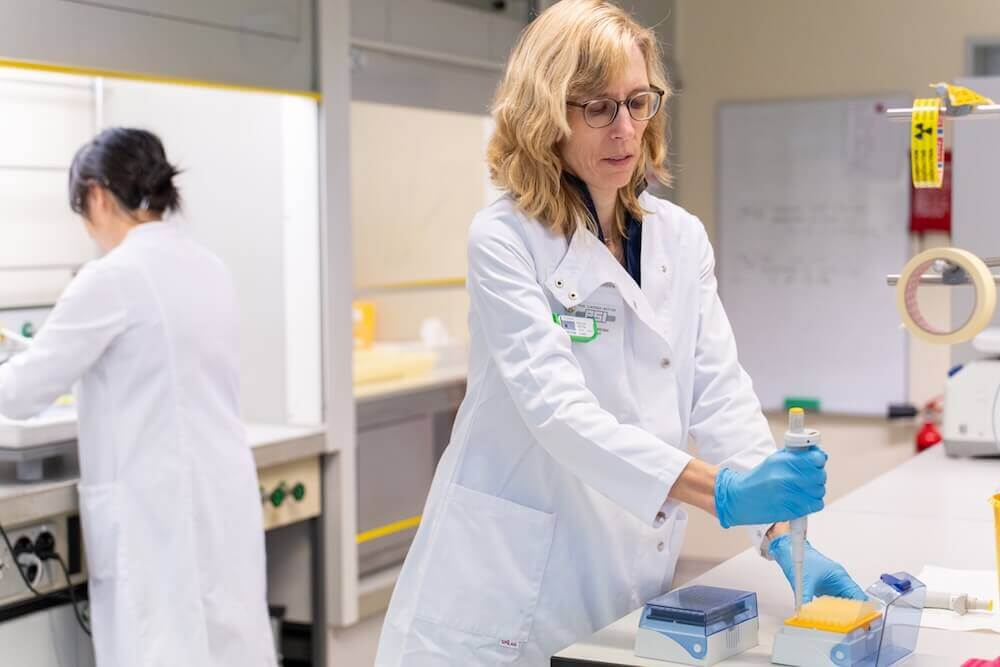Success Story
PROGNOSTICS – Better Outcomes for Patients with Advanced Prostate Cancer
Clinical Trial
Newly developed radiopharmaceuticals detect and destroy micro- metastases
Prostate cancer is the most common cancer in men and the second leading cause of cancer-related death in men. Improving treatment outcomes for patients with advanced prostate cancer is the goal of PROGNOSTICS, a phase-1 clinical trial funded by PHRT.
The clinical trial, led by Damian Wild from the University Hospital Basel, is testing a novel radiopharmaceutical developed by Roger Schibli’s group at the Paul Scherrer Institute in patients with therapy-refractory prostate cancer. The study is also supported by Nicola Aceto from ETH Zurich.

“The more energy the particles lose over a short distance, the more toxic they are for cell clusters.”
Small clusters of cancer cells
The hypothesis behind the new treatment is that the current treatment with radioligands does not deliver a sufficient ionizing dose to the tumor sites. Current therapy is unlikely to eliminate small clusters of cancer cells that detach from the tumor and may be responsible for the recurrence of prostate cancer. “These cancer clusters may contain only a limited number of cells and may be too small to be detected by standard imaging techniques and too small to be treated efficiently,” says Schibli. This is where the new radiopharmaceutical comes in.
The radiopharmaceutical specifically recognizes a protein called prostate-specific membrane antigen (PSMA), which is overexpressed in prostate cancer. “The new drug recognizes PSMA and binds to the cancer cells. The radionuclide terbium-161 is coupled to the ligand, which emits short-range electrons (i. e. conversion and Auger electrons) in addition to beta particles. Short-ranged electrons deliver high radiation over a short distance,” explains Schibli. “We have also modified the targeting molecule so that increased accumulation in malignant cells can be achieved.” This combination of improvements enables effective irradiation of the cancer cells and therefore improved therapy.
Terbium-161 is the first radionuclide to be developed entirely in Switzerland and represents a potential improvement on previously developed radionuclides such as lutetium-177. In 2022, a radiopharmaceutical based on lutetium-177 was approved for the treatment of prostate cancer. However, around 30 percent of patients do not respond or suffer from a relapse. It is suspected that an insufficient radiation dose for the micrometastases is the reason why these patients experience an early relapse of cancer. In recent years, Schibli’s laboratory has shown in several preclinical studies that terbium-161 is more effective than lutetium-177, leading to improved survival of mice with tumors. The reason for this is that the short-ranged electrons deposit more energy in tumor cells than lutetium-177. “The more energy the particles lose over a short distance, the more toxic they are for cell clusters,” says Schibli.

Safety tests
In phase-1a of the clinical trial, 10 patients successfully received the new radiopharmaceutical in subtherapeutic doses to calculate dosimetry and determine general tolerability. The trial was performed in a direct, head-to-head comparison to the currently used lutetium-177 radiopharmaceutical. “From this study, we learned how the radiopharmaceutical behaves in patients,” says Schibli. Phase- 1b of the trial is currently ongoing, designed as a 3+3 dose escalation translational study. In this part of the trial, cohorts of 3 patients with metastatic prostate cancer will undergo a complete therapy schedule, receiving four treatment cycles, at gradually increased activities of the new radiopharmaceutical. At the end of the trial, the researchers will know whether the radiopharmaceutical is safe, and they will be able to estimate the maximum tolerated amount which can be safely administered. “We expect to already see a response in the first phase of the clinical study,” says Schibli.
The PROGNOSTICS trials are scheduled to conclude in 2026, which is possible thanks to the cost-neutral extension after the end of the PHRT initiative. If they prove successful, studies with larger cohorts of patients will be conducted to see if the drug can reduce the risk of recurrence and improve outcomes for patients with advanced prostate cancer.
Interdisciplinary research
If one of the goals of PHRT’s strategic direction is to foster collaboration between institutions and disciplines, then the PROGNOSTICS study serves as a flagship model. It combines the latest radiopharmaceutical developments that bring ETH technologies from the lab to the bedside. “Aceto’s group has developed the technology to detect circulating tumor cells and cell clusters and analyze them for overexpression of the PSMA protein and to check whether patients have such clusters; PSI has not only developed the radionuclide and optimized the radiopharmaceutical, but also produced the radiopharmaceutical in its clean room facility at the Paul Scherrer Institute using good manufacturing processes; and last but not least, the clinical partners at the University Hospital Basel, who have ample experience with radiopharmaceutical therapies, are recruiting patients,” says Schibli. “This is interdisciplinary research at its best!”

Prof. Dr. Roger Schibli

